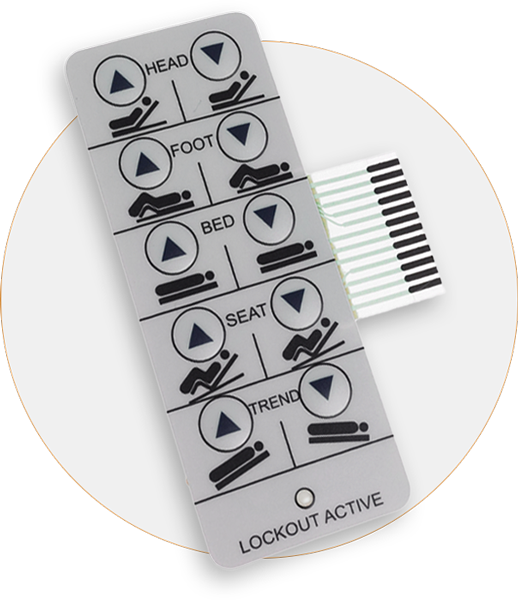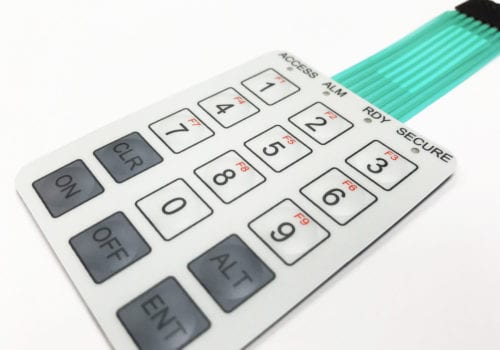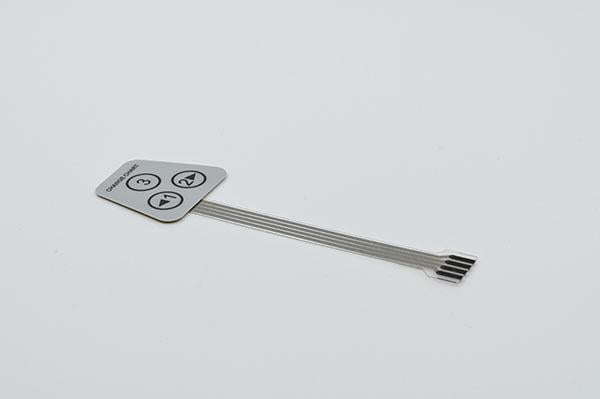Don’t ignore the value of working with a trustworthy membrane switch manufacturer for initial builds.
Don’t ignore the value of working with a trustworthy membrane switch manufacturer for initial builds.
Blog Article
Everything About Membrane Change: Recognizing Its Design and Performance
When you consider the control interfaces in modern-day devices, membrane layer buttons typically enter your mind. These parts are greater than just buttons; they blend layout and capability seamlessly. Understanding exactly how they function and what makes them reliable can transform your viewpoint on day-to-day electronic devices. There are subtleties to their style and performance that you might not be mindful of. Allow's discover what collections membrane layer changes in addition to various other control systems.
What Are Membrane Layer Buttons?

Their seamless nature makes them easy to tidy and immune to dirt and moisture, an important attribute in several atmospheres. Membrane switches can also be tailored regarding shape, dimension, and graphics, permitting producers to develop one-of-a-kind user interfaces customized to certain items. And also, they're lightweight and slim, which assists in reducing the total bulk of tools. Generally, membrane switches play a considerable function in improving individual experience across a vast variety of applications.
Just How Membrane Switches Over Work
When you push a trick on a membrane layer switch, it activates a straightforward yet reliable system. The leading layer, often constructed from adaptable material, pushes down onto a conductive layer beneath it. This activity bridges the space in between conductive traces, completing an electrical circuit. As quickly as the circuit closes, it sends a signal to the device's controller, which interprets your input.
You'll observe that the tactile responses differs based on the button style, supplying either a soft click or an extra pronounced reaction. When you launch the secret, the membrane returns to its original setting, resuming the circuit and quiting the signal. This procedure takes place nearly immediately, guaranteeing a responsive individual experience.
Membrane switches are prominent because of their toughness and resistance to dust and dampness, making them suitable for different applications, from family devices to clinical tools. Recognizing this procedure aids you appreciate their widespread use.
Trick Elements of Membrane Layer Buttons
Recognizing the essential components of membrane layer switches is fundamental for grasping their capability and style. The protective layer shields against environmental elements and put on, extending the switch's life-span. By understanding these elements, you'll obtain insight right into how membrane switches run and their relevance in numerous applications.
Materials Used in Membrane Switch Over Layout
The efficiency and longevity of membrane layer switches greatly depend on the materials used in their design. You normally encounter polyester and polycarbonate as primary substrates due to their exceptional stamina and flexibility. These products stand up to scrapes and chemicals, making them perfect for requiring settings.
The conductive layers typically utilize silver or carbon, picked for their integrity and conductivity. membrane switch manufacturer. Silver gives exceptional efficiency, while carbon is an economical choice. For the overlay, you might consider a matte or shiny coating, depending upon your visual requirements and user experience
Adhesives play a necessary duty too; they bond layers safely and guarantee durability. Ensure to select adhesives that withstand environmental factors like temperature and moisture. Ultimately, don't forget the importance of a good printing technique for graphics, as it enhances both functionality and visual charm. Choosing the appropriate products will guarantee your membrane layer button stands the examination of time.
Style Considerations for Membrane Layer Buttons
While making membrane buttons, it's crucial to take into account various factors that influence their capability and user experience. Beginning by focusing on the format and button dimension; make certain they're instinctive and easy to browse.
Do not overlook the graphic style; clear labeling and shade comparison are substantial for exposure. Validate your layout accommodates environmental elements, like wetness or temperature variants, which can affect performance. Finally, keep in mind the value of screening models with actual customers to collect responses and make needed changes. This iterative procedure aids you refine the design, verifying it fulfills both practical and aesthetic requirements effectively. By meticulously taking into consideration these elements, you'll create a membrane button that boosts use and find more complete satisfaction.
Applications of Membrane Layer Buttons
Membrane layer buttons are functional parts located in numerous applications, from commercial devices to customer electronic devices. You'll see their effect in makers that require durable user interfaces and in gadgets that gain from smooth styles. Recognizing these applications aids you appreciate the functionality and usefulness of membrane switches in day-to-day modern technology.
Industrial Tools Usage
When you're aiming to boost the capability of industrial tools, membrane buttons use a trusted remedy that integrates toughness with easy to use design. These switches are excellent for extreme atmospheres, giving resistance to dirt, moisture, and chemicals. You'll locate them in control panels for producing machines, HVAC systems, and medical devices, where precision and responsiveness are essential. Their low profile suggests they fit effortlessly right into numerous devices, saving beneficial area while maintaining convenience of use. With adjustable graphics and backlighting options, you can create an intuitive interface for operators, boosting effectiveness and safety and security. And also, their long life-span decreases maintenance costs, making them a clever financial investment for your industrial applications. Embrace membrane layer buttons to simplify your procedures and enhance total performance.
Consumer Electronics Combination
In the domain of customer electronics, membrane layer buttons play an important role in enhancing user interaction and device functionality. Membrane layer buttons additionally assure longevity and resistance to dirt and wetness, prolonging the life expectancy of your electronics. By choosing membrane buttons, you boost not simply the functionality but also the style of your tools, making everyday interactions smooth and pleasurable.
Benefits and Disadvantages of Membrane Layer Buttons
While membrane switches supply an array of benefits, they also feature some downsides that you must think about. One significant benefit is their small design, Full Report making them perfect for space-constrained applications. They're additionally cost-efficient, supplying a resilient solution with a low manufacturing expense. Furthermore, their smooth surface is very easy to clean, enhancing hygiene in atmospheres like hospitals.

However, there are disadvantages. Membrane buttons can have a shorter life expectancy contrasted to mechanical switches, specifically under heavy use. They can additionally be much less responsive, which could impact user comments during procedure. If harmed, repairing them can be difficult and often requires total substitute. Inevitably, their sensitivity to extreme temperatures and ecological problems might restrict their effectiveness in certain settings. Stabilizing these advantages and disadvantages will certainly help you identify if membrane layer buttons are the appropriate suitable for your project.
Frequently Asked Inquiries
The Length Of Time Do Membrane Switches Over Normally Last?
Membrane changes commonly last between 5 to 10 years, depending on use and ecological problems. You'll intend to evaluate elements like wear, exposure to moisture, and temperature level changes to assess their durability properly.
Can Membrane Layer Switches Over Be Personalized for Certain Styles?
Yes, you can customize membrane layer switches to fit certain designs (membrane switch manufacturer). You'll have the freedom to select shades, forms, and designs that match your task's needs, guaranteeing they blend seamlessly with your total aesthetic
What Is the Cost Variety for Membrane Layer Switch Over Production?
The price variety for membrane layer button manufacturing commonly falls in between $1 and $10 per device, relying on factors like style intricacy, amount, and materials. You can obtain quotes from makers to discover the most effective option.

Are Membrane Switches Over Water-proof or Resistant?
Membrane switches can be made to be waterproof or immune, depending upon products made use of and building techniques. If you require them for damp environments, guarantee you specify those needs during the design process.
Exactly How Do Membrane Layer Changes Contrast to Typical Switches?
Membrane switches are typically thinner and extra flexible than conventional buttons, using a sleek design. They're commonly simpler to clean up and integrate, but may not offer the additional info tactile feedback you're used to with mechanical options.
Verdict

Report this page